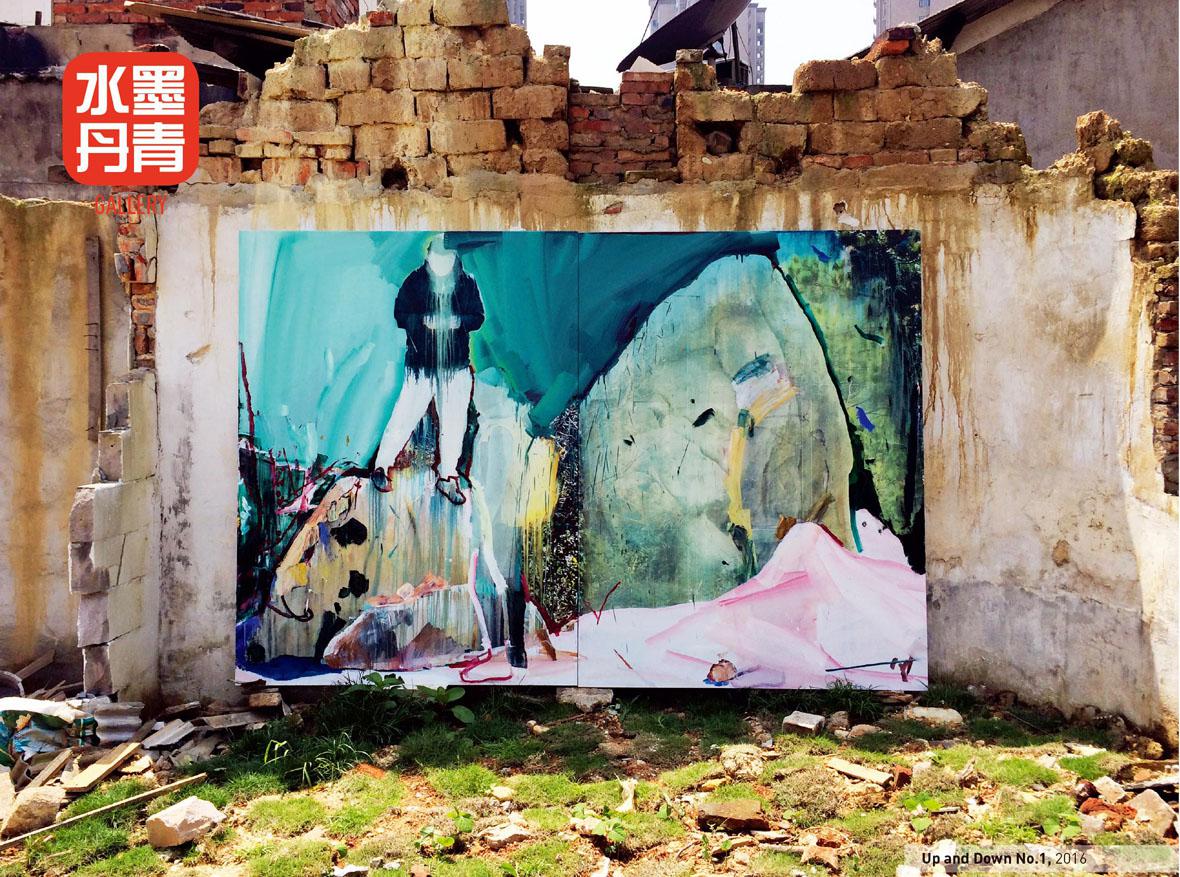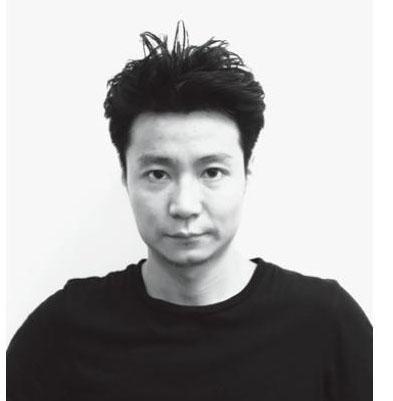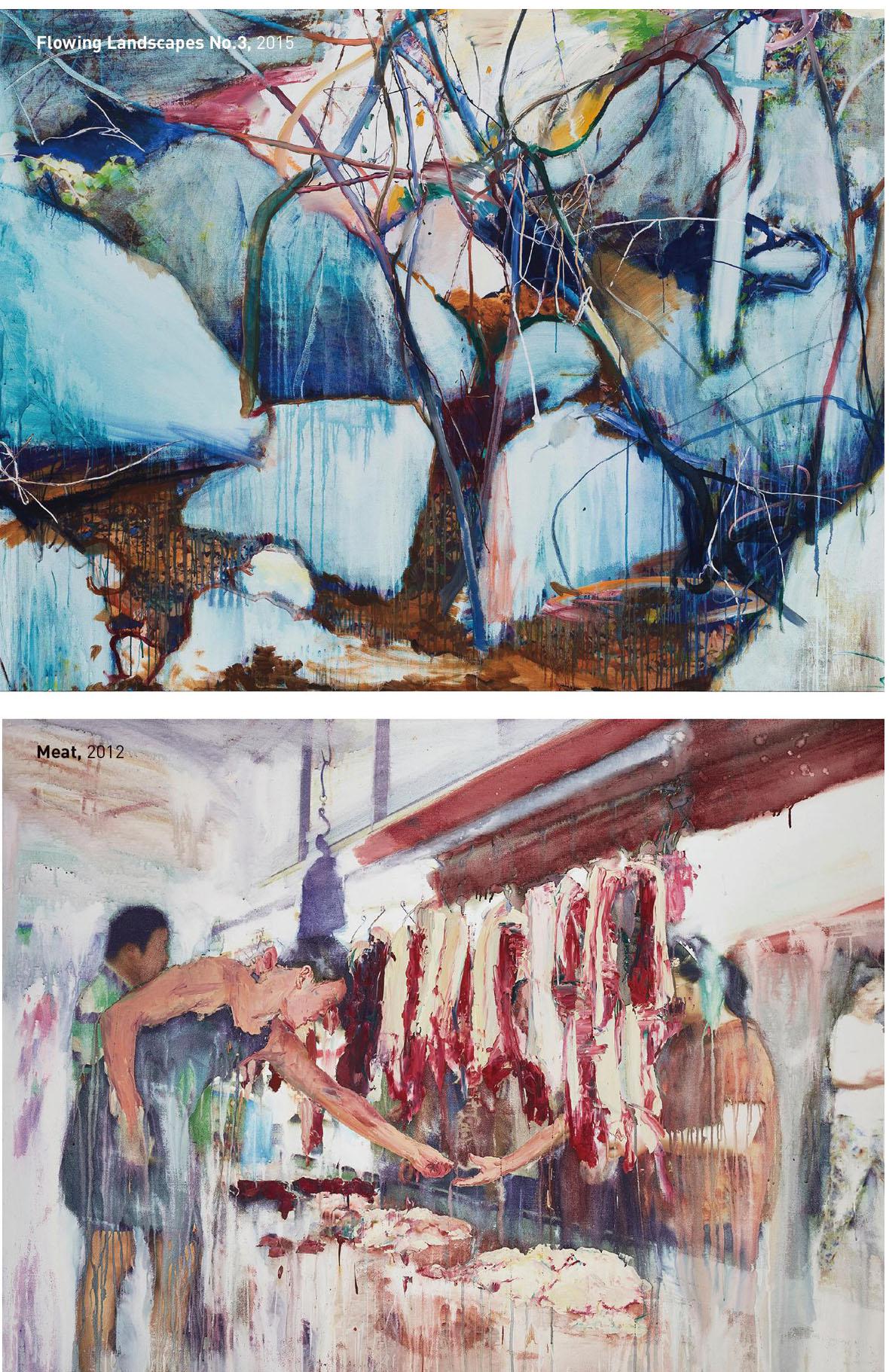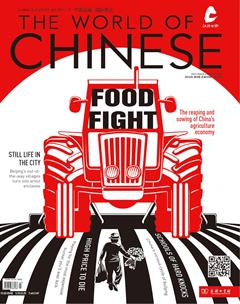What it Means to be Me
2016-01-10祝伟婧许宏翔祝伟婧王音
祝伟婧 许宏翔 祝伟婧 王音



How did you come to create your series “Flowing Landscapes” and “Meat”?
In 2008 I began a series of experiments with visual language. I collected all kinds of imagery, including my own photographs, old photos I bought online, magazine cutouts, and advertisements. In some of them I found clues to my visual questions. I would print photos onto canvases using techniques so they could be dissolved. Superfluous visual elements would be removed, and missing ones would be added. “Flowing Landscape” is not about a landscape, rather a visual exploration. A still image is dead, but painting is alive. When painting interferes, the image becomes unpredictable, alive, and graceful. Hence the name: scenery that flows. The “Meat” series was an exploration into the body and uses the same techniques as “Flowing Landscape”, a reappropriation, or as some say, “deconstruction” of images.
How much has your printmaking background influenced your work?
With printmaking, there is always a methodology. Only by calculating and following a set of procedures can you achieve your expected visuals. These past few years, I was trying to perfect my methods. Now, I am trying to shake away compulsory methods to seek something new, so Ive moved away from my previous techniques. Yet, I feel that what I am looking for has become more precise. One doesnt do contemporary art to do contemporary art; contemporary art and painting are not inclusive. To me, its significant for works to have an aura, to see oneself in them.
Your works all seem to have a distinctive “Changsha” aura, almost as if one can feel the citys moisture in the air. They seem very personal, not necessarily specific.
You could say that. Very “local”. I use painting to look back and inwards. However, if I took them to New York, they would still work because I am not trying to be like Changsha, I simply am. One of the main leads I pursue is perhaps to inquire into myself, the past that adds up to be me. Although I moved to Beijing, my way of thinking is still in a Changsha state of mind. To me, painting is not about making high art, or eye-catching art, its about being oneself, being real, and putting ones feet firmly in the ground. So, a lot of my source materials are ordinary objects and scenes. Earlier this year, I went home and exhibited my paintings on the walls of demolished buildings in Changsha, but not as cries against demolition or urbanization. I saw visual language, not demolished ruins. It was purely a personal act, to see my paintings—fruits born because I left home to study—interact with the lower class streets where I grew up.
My works are me. I am not into making refined or pretty works, and refuse strong narratives and specific references such as 紅领巾, or the red scarf. I try to distinguish between imagery that interest me and imagery connected to me. One shouldnt try to become a stereotype to fit characterizations, such as the trend of Peking Opera imagery. Many confuse interests with what they are. Some artists create similar works because they share similar interests. We all share similar experiences, watch similar TV shows, and read similar news stories, which leads to similar interests—hence, similar languages of drawing. I am especially wary of this pitfall. Who am I? What I want to explore is myself, which you could say is human nature. The self is human nature.
- WEIjing ZHU (祝伟婧)
Xu Hongxiang (许宏翔)
Born and raised in Changsha, Hunan Province, Xu Hongxiang (许宏翔) studied printmaking at the China Central Academy of Fine Arts. Now based in Beijing, Xu mainly works in the medium of painting and is most well known for his “Flowing Landscapes” (流动的风景) and “Meat” (肉) series.
Technique and Manipulation
A background in theater and dramatic contrasts of emotional subtlety mark Wang Yins works with distinct theatrical resonance. This resonance is made all the more effective through “The Gift”, an exhibition at UCCA. Divided into three sections, “Departure”, “Sojourn”, and “Return”, the artist inspects his personal as well as Chinese arts history in these works. Following both a chronological sequence and narrative sequence, the three parts form a totality where the artists intention seems easily accessible yet elusive.
With “Departure”, the exhibition sets off with Wang Yins iconic series, “Filling Station”. Though comparable to works on the same subject by Edward Hopper and Ed Ruscha, Wang Yins portrayal hits viewers with a definite blow of solitude. Although the artist strips the work of any direct symbols that may give a definite geographical identity, the “Russian Train” series seem to point to the beginning of Chinese Western art in the Peoples Republic of China, whose contemporary artistic traditions as well as political foundation are inseparable from Soviet influences. As the communist state grew, the increase in symbolism in Wang Yins works—such as mangoes (gifted to Mao by foreign guests who then gifted them to the Red Guards) and the nude series, which coincides with the pervasiveness of symbols in Chinese art in the 60s and 70s—is more than an intentional artistic-political allusion. The idea of early development of Chinese Western art as “imported” is conveyed in his other pieces as well.
In “Sojourn” and “Return”, Wang Yins background in theater becomes more apparent. Rather than aiming for realistic rendering and detailed depiction, he uses broad strokes to emphasize gesture, movement, and the contrast of light and shadow. Perhaps owing to his background in theater, Wang is particularly adept at conveying a mood via physical characteristics and lighting, re-appropriating regional landscapes into alienated scenes of mundane laborers. For instance, two works focusing on silhouettes, “Northwest (Afternoon)” and “Zhong Xiao Xian Lu”, of a man in what seems like workers uniform biking along your typical Northwestern China solitary street scene with the sun casting its chilled light, the other of a balloon vendor trudging along a nondescript street, his dark figure, half blocked by bright red balloons, seemingly weighed down by the tedious task of making a living.
Influenced by Jerzy Grotowsky and Samuel Beckett, Wang Yin explores the idea of one man as theater, as stage, in his paintings. In the same way that “poor theater” eliminates the excessiveness of stage settings, Wang Yin strips away visual elements and context in his works to enact dramatic impact, as most visible in “Sojourn”, where the artist focuses on mundane figures and scenes of normality, or in other words, poor people. His paintings build an emotional connection with the audience, via the figures contour, body language, very few objects providing context, and light and shadow. Wang Yins manipulation of color, of texture, draws the viewer into the painting, “Entrance to a Village”, as if one can feel the afternoon sun casting shadows.
Though subjects in his works seem forever suspended in a moment on a prolonged, endless, idle afternoon, their dramatic power enables and compels viewers to feel the “mood” and inane theatricality. Whether its the man with white hair sitting on a stool while holding a newspaper, or the garbage picker standing slightly crouched with tongs in one hand and a garbage bag in another, or even the men carrying a huge rock on the plain terrain of the Northwest—it is technique and manipulation that “paints” nostalgia and melancholy in the empty air.
- WEIjing ZHU (祝偉婧)
Wang Yin (王音)
Born in 1964, Wang Yin studied stage art at the Central Academy of Drama. Having been in exhibitions held in Germany, Spain, and Japan in addition to China, he now works and lives in Beijing. His works, though often seemingly removed from reality, seek to interact with their viewers.
